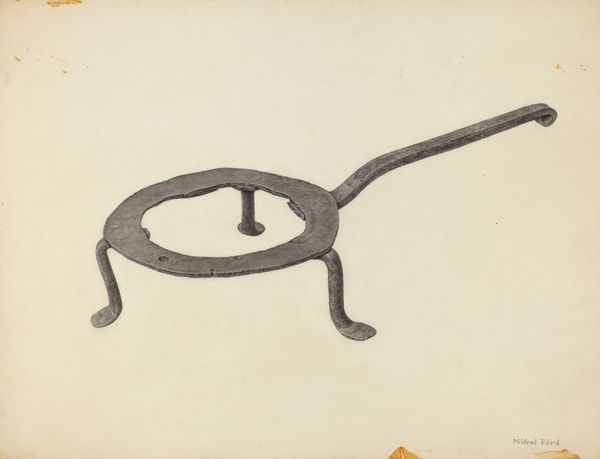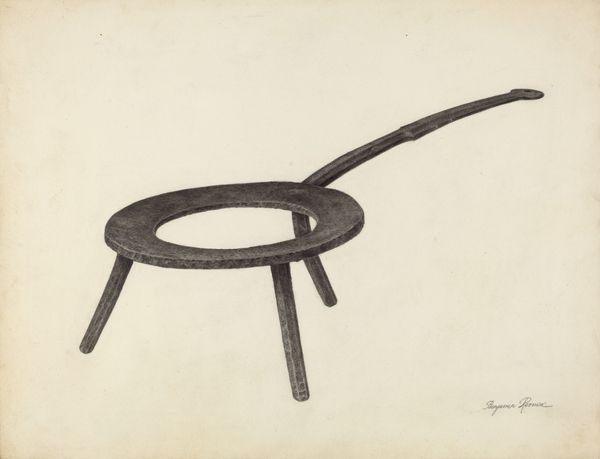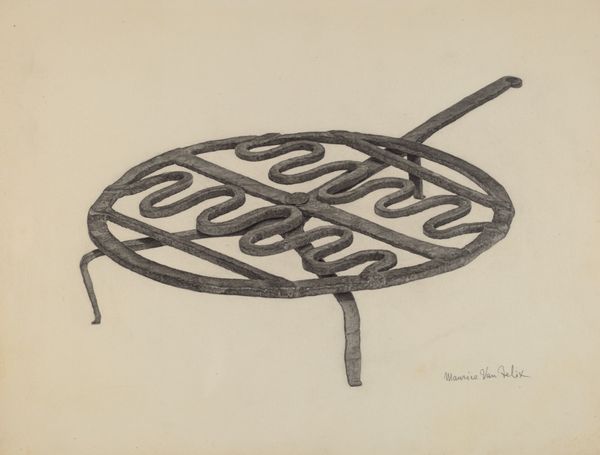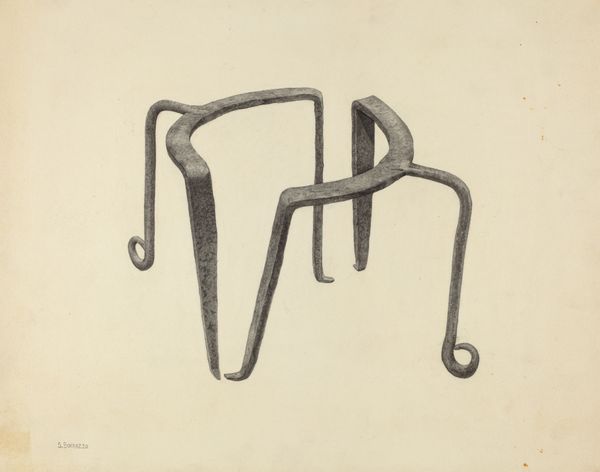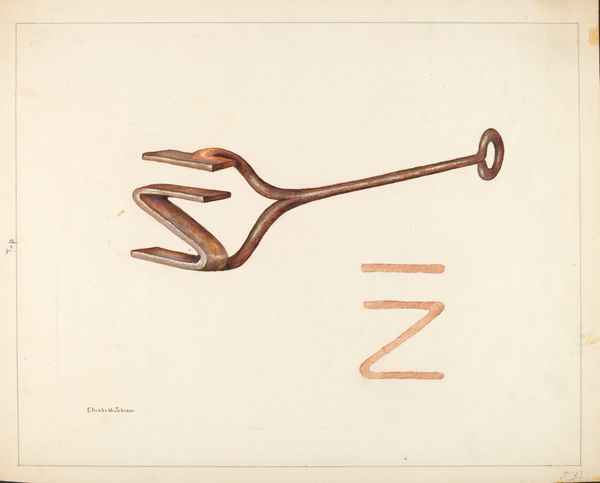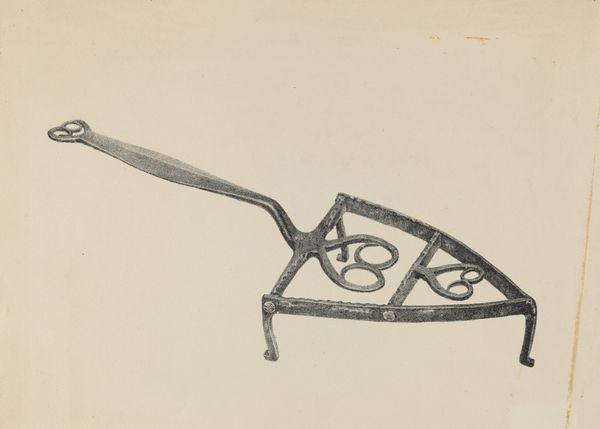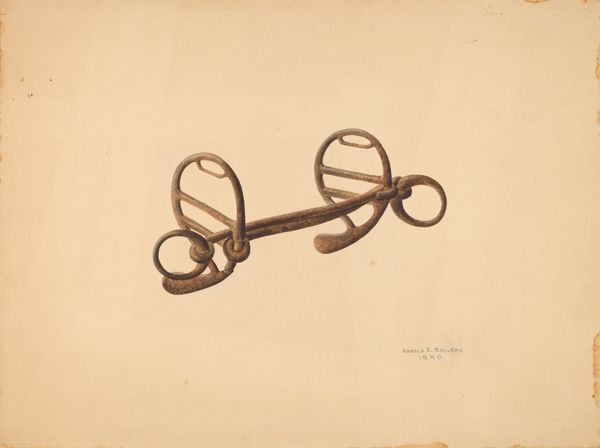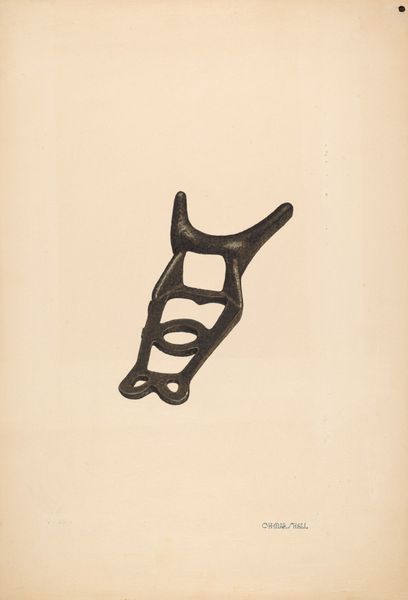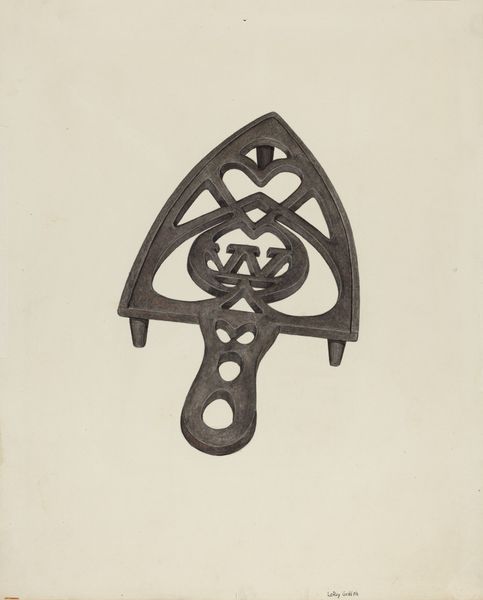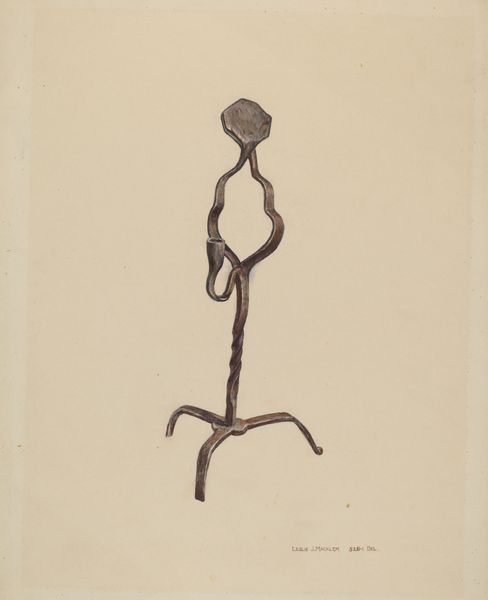
Dimensions: overall: 26.5 x 35.3 cm (10 7/16 x 13 7/8 in.) Original IAD Object: 8" long; 4 3/16" wide
Copyright: National Gallery of Art: CC0 1.0
Editor: Here we have Luther D. Wenrich’s “Trivet,” dating to around 1940. It's a humble subject, painted with what looks like watercolor and perhaps some pencil. It feels so...stark. A spotlight on a common object. What draws your eye to this, as an art historian? Curator: Well, "stark" is a great word for it! It reminds me of those solitary, almost haunting still lifes by Morandi, but instead of bottles, we get… a trivet! But the simplicity, that quiet intensity... I see a lot. Perhaps, in choosing something so workaday, so absolutely devoid of glamour, Wenrich is urging us to see beauty in the mundane. Don't you think that even the plainest objects, carefully observed, can be unexpectedly fascinating? It's a drawing, a painting, of course, but also a love letter to usefulness, to unpretentious living. Editor: That's beautiful. A love letter...I hadn't thought of it that way. It also looks almost like a tool... were trivets always considered art pieces? Curator: Ha! Almost certainly not. That's the sly subversiveness of art sometimes, isn't it? The way it coaxes us into contemplating something we would normally overlook. And, of course, there is an element of the modernist aesthetic – finding geometric form and balance in even the most ordinary of things. I'm left wondering though if this simple drawing is pointing to more – a longing perhaps, for the simple life during times of tumult. What do you make of that slightly wavering line and subdued palette? Do you find yourself picturing an idealized past? Editor: That makes perfect sense. I can totally see that now. Thank you! Curator: My pleasure! Now I am seeing it with a fresher appreciation. Cheers!
Comments
No comments
Be the first to comment and join the conversation on the ultimate creative platform.
